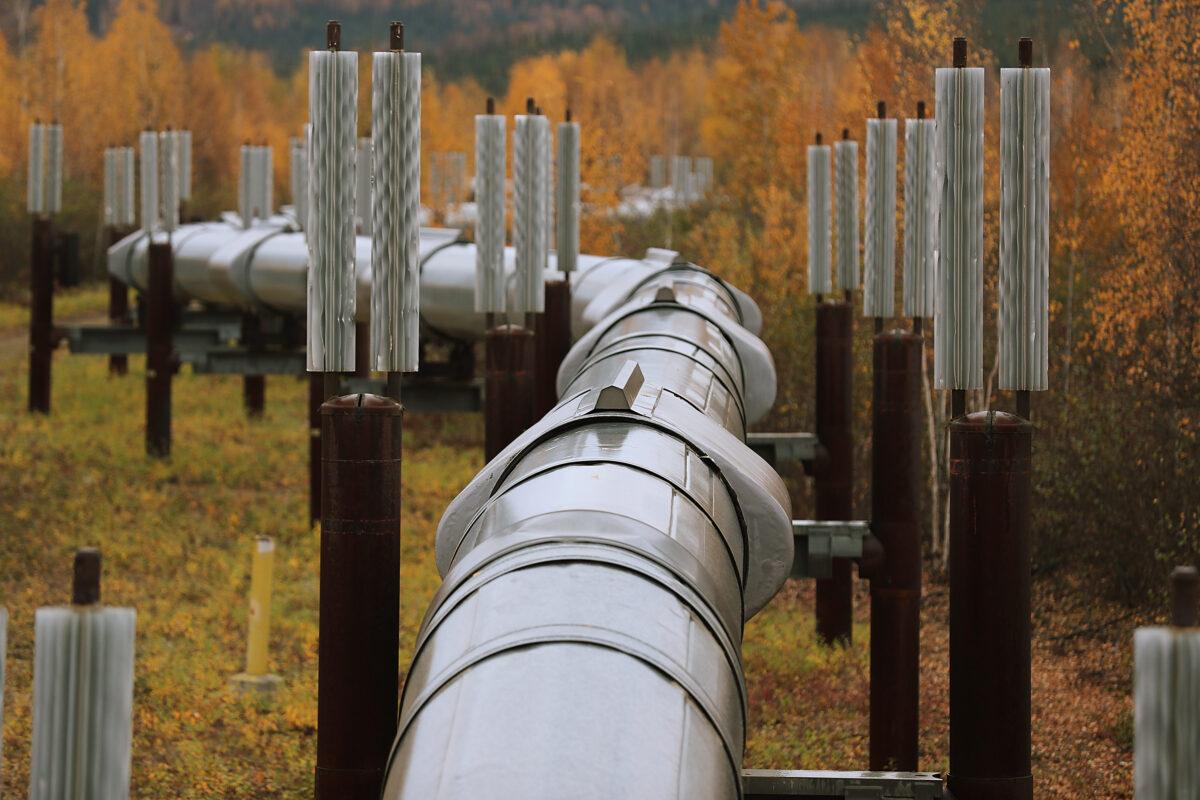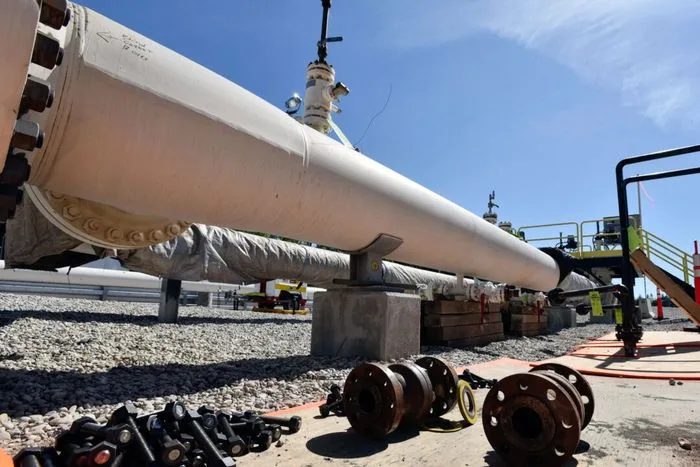By John Haughey
Pipeline operators want Congress to amend federal law to eliminate a “loophole” they say allows vandals to tamper with energy infrastructure with few legal repercussions.
Right now, under U.S. Code Section 60123(b) of title 49, convictions for purposely or negligently damaging energy infrastructure and destroying pipelines draw 15-year, five-year, and one-year prison sentences and fines up to $25,000.
“But there’s a loophole,” Liquid Energy Pipeline Association President and CEO Andrew Black said during a July 22 hearing before the House Energy and Commerce Committee’s Energy Subcommittee.
“If you tamper with a pipeline but don’t immediately damage or destroy it, it’s not covered by federal pipeline safety laws,” he testified during the hearing on the 20-month delayed reauthorization of the Protecting Our Infrastructure of Pipelines and Enhancing Safety (PIPES) Act of 2020.
“If you cover that,” in the PIPES reauthorization, “if you take that action to close that loophole, you will protect the environment and the workforce,” Black said.
As top targets for electronic sabotage and ransomware attacks, fortifying cybersecurity defenses to repel ever-evolving threats emerging from the ether is a daunting daily urgency for pipeline operators, utilities, and electricity transmission networks in the United States.
But lying in plain sight, often overlooked in the physical landscape, the nation’s energy infrastructure—pipelines, power plants, electric transmission lines—is not only obviously vulnerable, but often accessible to vandals, “valve-turners,” and thieves who can impose costly repairs on consumers and disable power grids.
And while countering high-tech cyber threats is a collective government-industry imperative, individual property owners bear the primary burden in protecting energy infrastructure from low-tech violence, vandalism, and tampering.
With more than 3.3 million miles of hazardous liquid pipelines crisscrossing the country, 3,000 electric utilities powering up to 75,000 substations, and regional transmission operators managing more than 2 million miles of overhead electrical lines, that’s a vast realm of largely unguarded targets to shield from committed bad actors.
Pipeline Vandalism: $100 Billion
Verifying exact figures for incidents involving pipeline vandalism and/or tampering, such as their frequency and costs, is difficult because the numbers are largely self-reported by operators to the U.S. Department of Transportation’s Pipeline and Hazardous Materials Safety Administration.
The U.S. Department of Energy’s Energy Data Catalog and Portal reported were 341 non-weather-related incidents nationwide that prompted pipeline shutdowns in its annual summary of 2023 DOE-417 Electric Emergency Incident and Disturbance Reports.

Of those 341 incidents in 2023, 122 were attributed to “suspicious activity” (58), vandalism (57), and theft (17), and included 13 “physical attacks.”
There were 87 reported cases of “damage or destruction of property” that—whether intentionally or inadvertently in the commission of another crime—endangered people, according to the DOE-417 reports.
Those 2023 numbers are down from 2022, when vandalism-related physical security incidents at energy infrastructure sites increased 70 percent from the prior three years, including 25 “physical attacks.”
The Washington-based Electricity Information Sharing and Analysis Center counted roughly 1,700 total reports of attacks, vandalism, or other suspicious activity at U.S. power plants and around pipelines and transmission lines in 2022.
The center, an independent advisory arm of the North American Electric Reliability Corporation, described 2022 as the most active year for vandals targeting energy infrastructure in the nation’s history.
While the industry doesn’t disclose costs related to damage from vandalism and tampering, repairing and replacing pipes can range from $1 million to $10 million per mile, according to the Department of Energy.
The Alliance for Innovation and Infrastructure estimates that overall vandalism and tampering damage to energy industries ranges from $50 billion to $100 billion annually.
While most pipeline vandalism and tampering worldwide is related to theft of components or product—oil, gas—that is not so in the United States and Western Europe, where purposefully inflicted damage on energy assets is mostly caused by activist “monkey-wrenchers,” or during conflicts with local landowners, or is acts of simple, meaningless vandalism.

A Daily Threat
It’s been five years since Congress reviewed federal safety and environmental standards for the nation’s 3.3 million miles of oil and gas pipelines, and 20 months since the Pipeline and Hazardous Materials Safety Administration, the agency created in 2004 to enforce them, has been reauthorized to do so with modernized regulations.
Among the changes pipeline operators want in the reauthorized PIPES Act is updated language that strikes “damaging or destroying” from Section 60123(b) and inserts “damaging, destroying, vandalizing, tampering with, disrupting the operation or construction of, or preventing the operation or construction of” in its place.
“There are criminal penalties in federal pipeline safety law for damaging or destroying pipelines, but we have incidents that don’t lead to immediate damage or discovery that fall under loopholes,” Black said, noting there’s even a movie on streaming platforms called ‘How To Blow Up A Pipeline.’
“So we think you need to address issues like valve turning that can cause pressure buildups, or torching pipelines, or shooting high-powered rifles at pipelines, all of which have happened,” he said.
“We’ve seen people cutting through chains to turn valves, shooting pipeline components before they are installed, and using blowtorches on pipelines.”
If not, pipeline operators said, Congress must adopt the Safe and Secure Transportation of American Energy Act proposed in March by Sen. Tim Sheehy (R-Mont.). The legislation is awaiting its first hearing before the Senate Commerce, Science, and Transportation Committee.
While dramatic stoppages such as the 2021 ransomware attack on Colonial Pipeline garner media attention, vandalism doesn’t get the same notice beyond high-profile events such as when activists torched the Dakota Access Pipeline in 2017, or when more than 40,000 customers in North Carolina lost power in December 2022 after firearm attacks damaged two substations.
But vandalism and negligence are a daily occurrence, a daily drain on resources, they said, whether it be teenage boys inadvertently causing an ammonia pipeline leak in Florida, or an “individual tampering with a gas line” in May, forcing 430 residents to evacuate homes, shuttering businesses, paralyzing a Tennessee town.
Chesapeake Utilities Corporation Executive Vice President Jim Moriarty, in his testimony, said his 160-year-old company with 1,200 employees delivers natural gas to more than 440,000 customers in nine states.
He’s seeing increasing acts of vandalism inflicted against Chesapeake’s 9,300 miles of pipelines and 700 miles of transmission lines.
“These activities range from gunshots targeting pipelines to improvised explosive devices placed on natural gas delivery equipment,” Moriarty said.
Such attacks have a ripple effect, he said.
“They also threaten the ability to deliver natural gas to thousands of homes, hospitals, schools, government, and military facilities and other critical infrastructure and human needs customers,” Moriarty said, calling on Congress to protect pipelines when they’re above the ground being installed as well as when buried underground.





